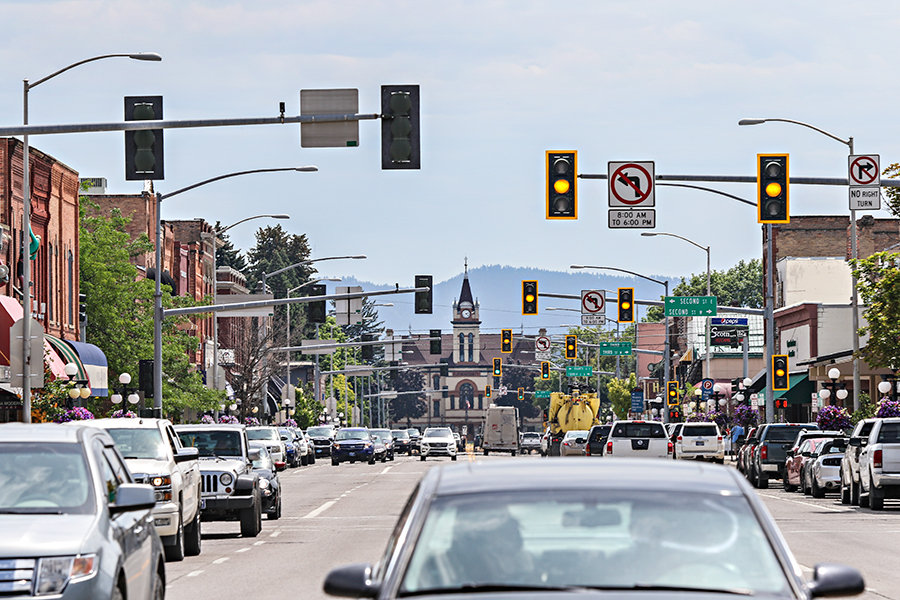Kalispell Area Transportation Plan
The City of Kalispell and the Montana Department of Transportation are in the beginning stages of an area-wide plan to update and improve the city’s transportation plan for the next 20 years.
The Kalispell Area Transportation Plan, or Move 2040, will consider a wide range of transportation infrastructure for the future, including roads, sidewalks, bike trails and public transit.
Project Manager Wade Kline says the process starts with examining current areas in need of improvement in Kalispell, including traffic-congested areas, downtown mobility and road improvement.
“At this point, it’s a blank slate,” Kline said. “The base of the process is trying to get a flavor of what the issues are. Where is there congestion? Where is travel time inconvenient? We’ll start to build those models.”
Phase one includes listening sessions open to the public to gather input and enable community engagement. The public is also encouraged to participate in the project survey and an interactive map, which allows users to pinpoint areas in need of improvement.
“We’re really early in the processes,” Kline said. “But really the most important part of the process is what the community has to share.”
In phase two, officials will start to identify specific solutions and develop options in phase three. Phase four will entail a draft plan, which will likely take place in 2021.
Listening sessions will be held at the Kalispell Chamber of Commerce on Wednesday, Feb. 12 from 6 p.m. to 7:30 p.m., and Thursday, Feb. 13 from 9 a.m. to 10:30 a.m. and 5:30 p.m. to 7 p.m.
For more information and to participate in a project survey, visit https://kalispellmove2040.com/resources/.
Kalispell Bypass
The Montana Department of Transportation (MDT) has started evaluating the southern mile-and-a-half of the Kalispell Bypass to determine what alterations to the Airport Road and Siderius intersections will relieve congestion and increase traffic flow.
While the southern three miles of the bypass are currently only two lanes, the MDT, in partnership with KLJ Engineering, plans to add two more lanes to increase traffic flow. The work will be completed in separate projects, including one to replace the Foys Lake roundabout with an overpass interchange and expand one-and-a-half miles of the bypass to four lanes. That project received a $12.75 million federal grant and is slated for construction next year, with preliminary work beginning later this year.
As part of the U.S. 93 to Airport Road project, covering the southernmost mile-and-a-half of the bypass, the Airport Road roundabout will be removed, although officials are still evaluating how to replace it.
“We’re not ready to go to design or start construction,” MDT Missoula District Manager Bob Vosen said. “We’re at a true information gathering right now. We just want to find out where the community’s focus is.”
Options include a proposed overpass on Airport Road, a five-leg intersection with a traffic light, adding two roundabouts or adding north and south ramps with stop signs.
The MDT is also evaluating whether or not to remove the Basecamp Drive roundabout. While officials may leave the roundabout in place, other options includes adding a southwest loop, which would add an overpass on Basecamp Drive, or build ramps with stop signs to provide speed control for bypass merging. Officials are also considering adding two low-speed curves on the ramps.
At an MDT open house last week, officials received feedback from the public. Vosen said the public was overwhelmingly concerned about capacity at the interchange intersections, while vehicle conflicts on side streets were another concern.
Vosen says combining construction costs with safety is another balancing act for the MDT.
“We have to make sure we’re coming up with a safe solution but it has to be financially feasible,” Vosen said.
For more information and to view intersection concepts and maps, visit mdt.mt.gov.
